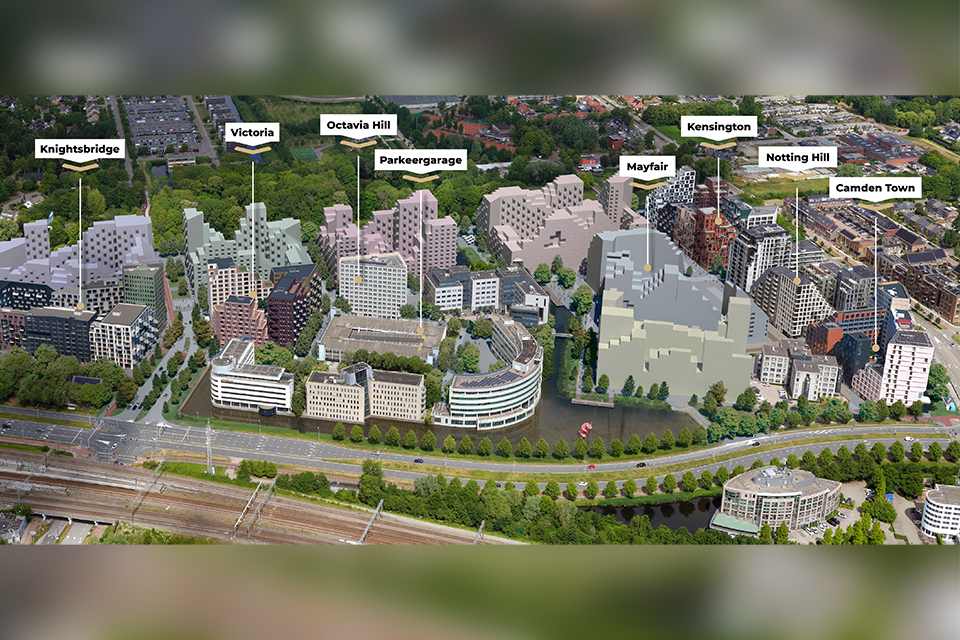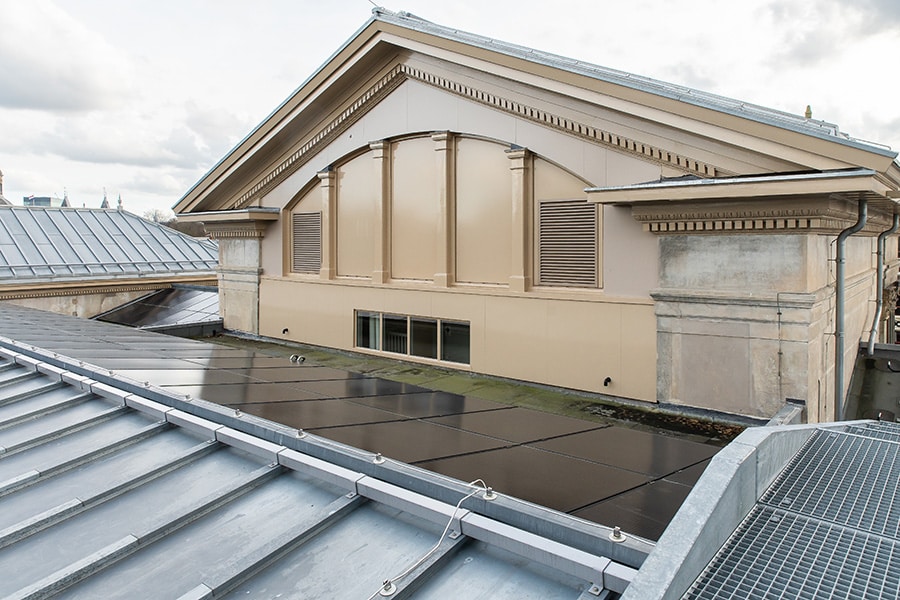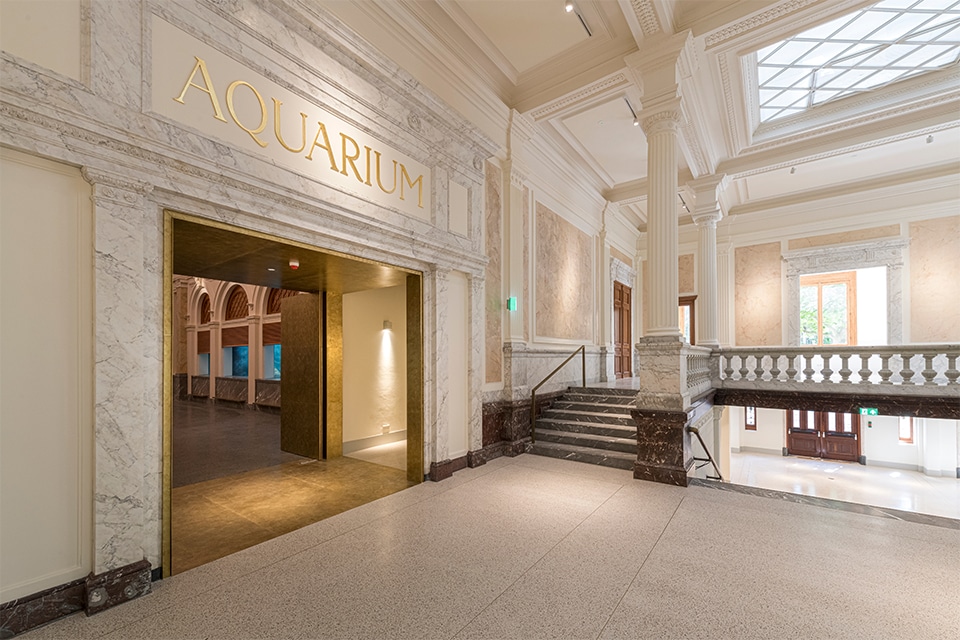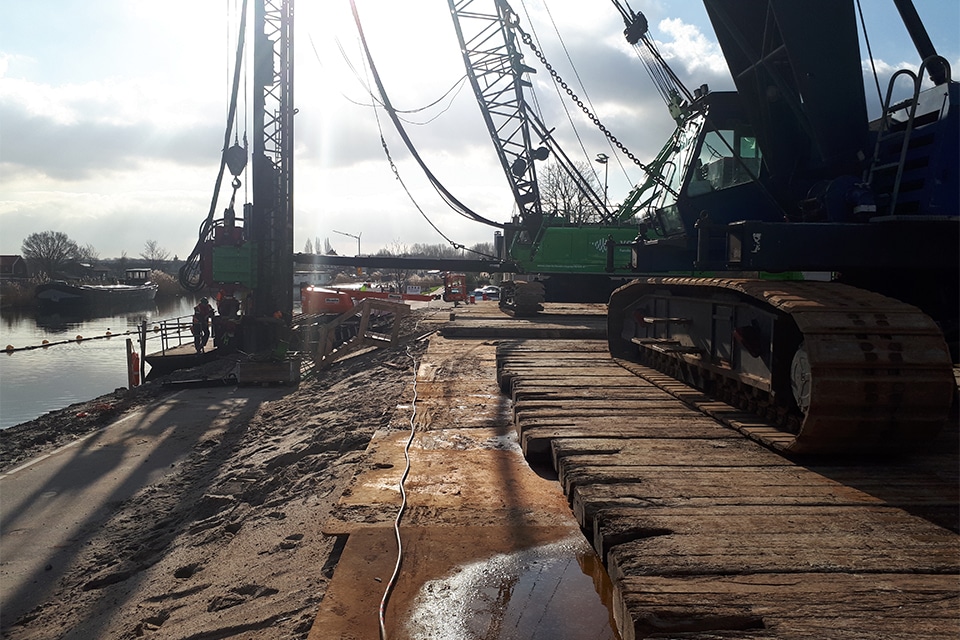
RAU Architects and Ex Interiors realize wooden 'cathedral'
Fully remountable headquarters Triodos Bank Netherlands grabs world firsts
Friday, September 6, Triodos Bank's new fully sustainable and circular office was officially delivered to the bank. RAU Architects and Ex Interiors were commissioned by Triodos Bank and developer EDGE to design a fully remountable, wooden 'cathedral' that sets the tone globally in the circular and sustainable field. For example, the office is the first large-scale 100% wooden, remountable office building. This building also serves as the first temporary materials bank and its carbon footprint is minimal.
From estate to good land
The bench as a new resident at The Reehorst -. Triodos Bank's new office is located on Landgoed De Reehorst. De Reehorst is part of a series of country estates in Zeist and Driebergen, known as the Stichtse Lustwarande, and is an important link within the National Ecological Network (EHS). In 2011, Triodos Bank decided to build a new office at De Reehorst. After previous high-profile (main) offices from 1999 and 2006, RAU architects also designed this new office in collaboration with Ex Interiors. The aim was to realize a 'gesamtkunstwerk' in which there was optimal cooperation with all other advisors such as construction company Aronsohn, the advisors Deerns, DGMR, BBN, the landscape architects of Arcadis and construction company J.P. van Eesteren and its subcontractors. Giving the design maximum circular potential creates a dynamic balance between nature, culture and economy. The arrival of the Triodos Bank has thus provided a new impetus to bring the estate to the 21e century to transform.
The wooden 'cathedral'
The wooden 'cathedral' - The building has no obvious front or back. Nature-friendly walkways lead the passerby and employee to the two entrances. Once inside, the transparency of the building and the special wooden construction are evident. The all-glass facade extends from floor to floor, allowing natural daylight to penetrate deep into the building. Per façade grid of 3.60 meters, a floor-to-ceiling window can be opened. This makes contact with the surrounding landscape even more intrusive, without interfering with the regulation of the indoor climate. Vides create visual connections between the different floors. The spiral staircases located in the voids connect the floors and form short passages that naturally encourage the use of the stairs. Both the design and the use of materials and colors within the building take their direct inspiration from the landscape. Through the nuanced color choice of materials, the wooden construction components visually stand out from the rest. The wooden construction is directly visible in the form of laminated trusses and wooden CLT (Cross Laminated Timber) cores. The also wooden CLT floors are partially camouflaged by the wooden rafters and the climate ceiling elements above them. The first floor has a large floor height that creates an association with a "cathedral" when observing the wood trusses placed around the all-wood cores. To maximize the transparency of the work floors and their relationship to the landscape, special work areas are separated by transparent partitions, which meet very high noise requirements. However, where visual privacy must also be ensured, transparent walls are replaced by closed walls. These are often provided with a linen finish for optimal acoustics.
Form - Organ - Gestalt'e'
A building for nature, culture and economy - The composition and shape of the five-story building (12,994 m2) was inspired in part by nature, the rhythm of the landscape rooms in the surrounding estate and the flight paths of bats. The three transparent, similarly shaped towers rise from south to north and are alternately connected on the ground, first and second floors. This physically become organ facilitates daily stunning views for all employees. Its stature creates three new "landscape rooms" between the forest edge and the building and creates a diversity of new landscape qualities all around. The interior designed by Ex Interiors further reflects the beauty of the surrounding landscape. The choice of organic forms, refined materials and sober use of color inspired by the palette of the estate create a natural stillness upon entry and enhance the fusion of the building with its surroundings. The wood, used in both furniture and flooring, is mostly sourced from the estate. By selecting materials for their authenticity, an extra dimension has been added to the building, creating an integrated design that contributes to the peace and serenity in the building. Within this enormous openness and transparency in the building, one experiences a sense of safety and security through the interpretation of the various functions. A 'meeting building' where the interaction with nature and spontaneous encounters between employees and visitors unfold as a matter of course. To this end, the first floor is the publicly accessible part. On the 1st floor is the collaboration floor with a diversity of workstations aimed at an internal meeting for employees of the bank. The remaining workplaces for Triodos Bank employees will be located in the three towers with breathtaking views of the landscape.
Posture with wood
The first large-scale wooden office building - The entire building, both the low parts and the towers, consists of a unique wood construction. Wooden floors, wooden shafts and wooden columns combine to form a spectacular structure like that of a "cathedral." The building's composition and its glass facades maximize the entry of daylight and provide magnificent views of the invading estate, allowing all employees to work not only on, but also in, the estate. The building incorporates 1,615 m3 of laminated timber, over 1,008 m3 of cross-layer timber (CLT) and 5 original tree trunks. Only the basement still has a concrete structure due to water management. This has created a building with the lowest carbon footprint to date.
Sustainability optimizes the present
Costly does not have to be expensive - In addition to incorporating the very highest sustainability ambitions and achieving BREEAM Outstanding certification, the new office is also an energy-neutral accommodation that meets the very highest health requirements of the materials used. For example, the proportion of wood in the main supporting structure is virtually 100% and only natural textiles have been used in the interior. Climate islands regulate the climate at the micro level. Integral sustainability thus forms the basis for this socially responsible (building) development.
Circularity facilitates future
A building as an option with a future - RAU Architects sees a circular building as a temporary assemblage of products, components and materials with a documented identity. The origin and planned repurposing of all products, components and materials are hereby accurately documented in order to easily provide new housing for them in the future. It is important to anticipate possible adaptations as early as the building design stage, whether due to changes in user needs, differences in useful life of building components or external influences such as changing regulations or climate change. Facilitating the permanent consequences of temporariness is therefore characteristic of the design. By turning real estate into "loose goods," a building with maximum circular potential has been realized: remontablity without loss of value. The building is literally screwed together with 165,312 screws. This means that by ever unscrewing the building again, the circular potential 100% can be activated without loss of value of materials, components and products.
The couch inside a couch
The world's first building conceived as a materials bank - The fact that material values are also monitored online via the Madaster platform (the land registry for materials) makes the building not only a materials depot but also a materials bank. This allows the value of materials in the future to be made balance sheet technically liquid and/or activated for tax purposes.
Collaboration
The design team got to work on behalf of Triodos Bank. EDGE facilitated the complete process. Contractor is J.P. van Eesteren and installer is Bosman Bedrijven. Finally, Arcadis and Copijn are involved as garden and landscape architects and tree specialists. On November 25, Triodos Bank employees will move into the building.








